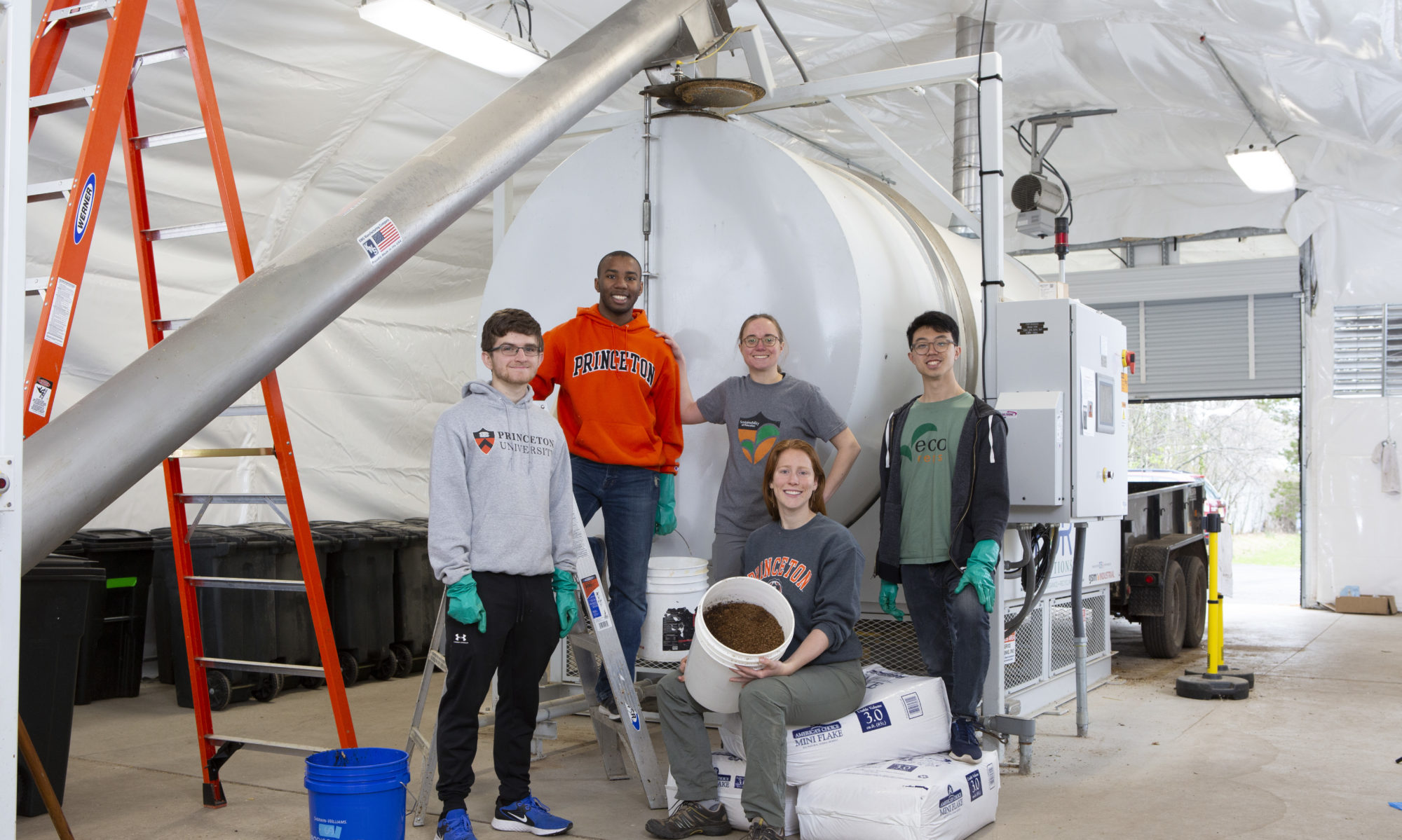Happy New Year everyone!
Before we recap 2023, the comPOSTer takes a look back at the fall semester happenings at the S.C.R.A.P. Lab:
In the Fall we received the results from our spring baseline audit of everything consumers were putting in trash and recycling at retail dining. We selected the largest venue – Frist Gallery – and one of the smaller cafes (Shultz) on campus as representative locations. Over the course of two days in mid-April, our Campus Dining and Sanitation staff helped us collect and transport the waste materials so they could be audited by our contractor, MSW Consultants.
Figure 4-2 (shown below) compares the recoverability of refuse from the Frist Campus Center and the Shultz Café. Key takeaways include:
- Most of the food waste (average of ~35%) from each location was loose, this amounted to 100 lbs. over two days (“Food Waste/Compostable” columns)
- Another ~30% of items across the two locations consisted of items “Eligible for Conversion to Compostable Alternatives” Uncertified paper items such as commercial soft drink cups, french fry “boats,” and uncoated paper plates were the biggest culprits.
In sum, over 60% of items going to the landfill have the potential to be diverted to composting in the two retail dining locations.

The goals of the fall semester were to:
- Replace traditional petroleum-based plastic packaging with certified compostable packaging
- Provide collection receptacles for compostable items and change the behavior of diners to encourage proper sorting
- Investigate how adding the compostable products affects the composting process
First, our Campus Dining team worked with our food supplier to streamline the number of disposables that are offered in retail dining while also swapping out products for the compostable alternatives. Working mainly with Eco-Products, we identified two different types of certified compostable products:
- Molded fiber (consisting of paper or sugarcane) – typically plates, “clamshell” containers, and bowls like the tan ones shown below
- Polylactic acid (“PLA”) – which is a plastic substitute made from fermented plant starch (usually corn) – typically utensils and cold cup lids
- Or a combination of both (e.g. hot coffee cups or soup containers that are fiber-based but have PLA coatings)
In October, we began to transition some of the single-use packaging to the compostable alternatives and began collecting them during meal hours with the help of bin monitors to ensure a contaminant-free stream.

For two weeks we loaded the food scraps and compostables using the standard way (shredded by the composter’s built in shredder). We had a transition week during fall break and then two weeks after that we pre-shred the compostables through a chipper prior to being loaded in the hopper as part of the exercise on investigating the impact of size reduction. Throughout the Zhang lab researchers and students in the first year seminar course monitored exhausts gases and compost quality.


In mid-December the students presented their posters with preliminary findings on how adding the compostable products affected the exhaust gas profiles and nutrient (particularly nitrogen) cycling. The next post will be dedicated to an executive summary of the results.

Meanwhile, we transitioned most packaging products to compostable alternatives and rolled-out 24/7 collection containers for consumers in the Frist Gallery. We took an agile approach and tinkered with the space based on direct feedback from diners and their observed behaviors. See our evolution below:




MSW Consultants came back to campus to perform the follow-up audit. Results are pending but quick observations included:
- About a 10% contamination rate (by weight)
- 30% loose food
- The remaining ~60% are certified compostable products that were loaded into SCRAPPY and treated as a carbon or “brown” source for the system (consistent with earlier audit results)
We will continue to modify and enhance the sorting area to improve diversion and lower contamination rates, but so far we are okay with the level of contamination.

ON TAP
Debrief of student research findings on the effect of adding compostable diningware on compost maturity and stability
Recap of last year and what’s next for SCRAPPY in 2024!





























